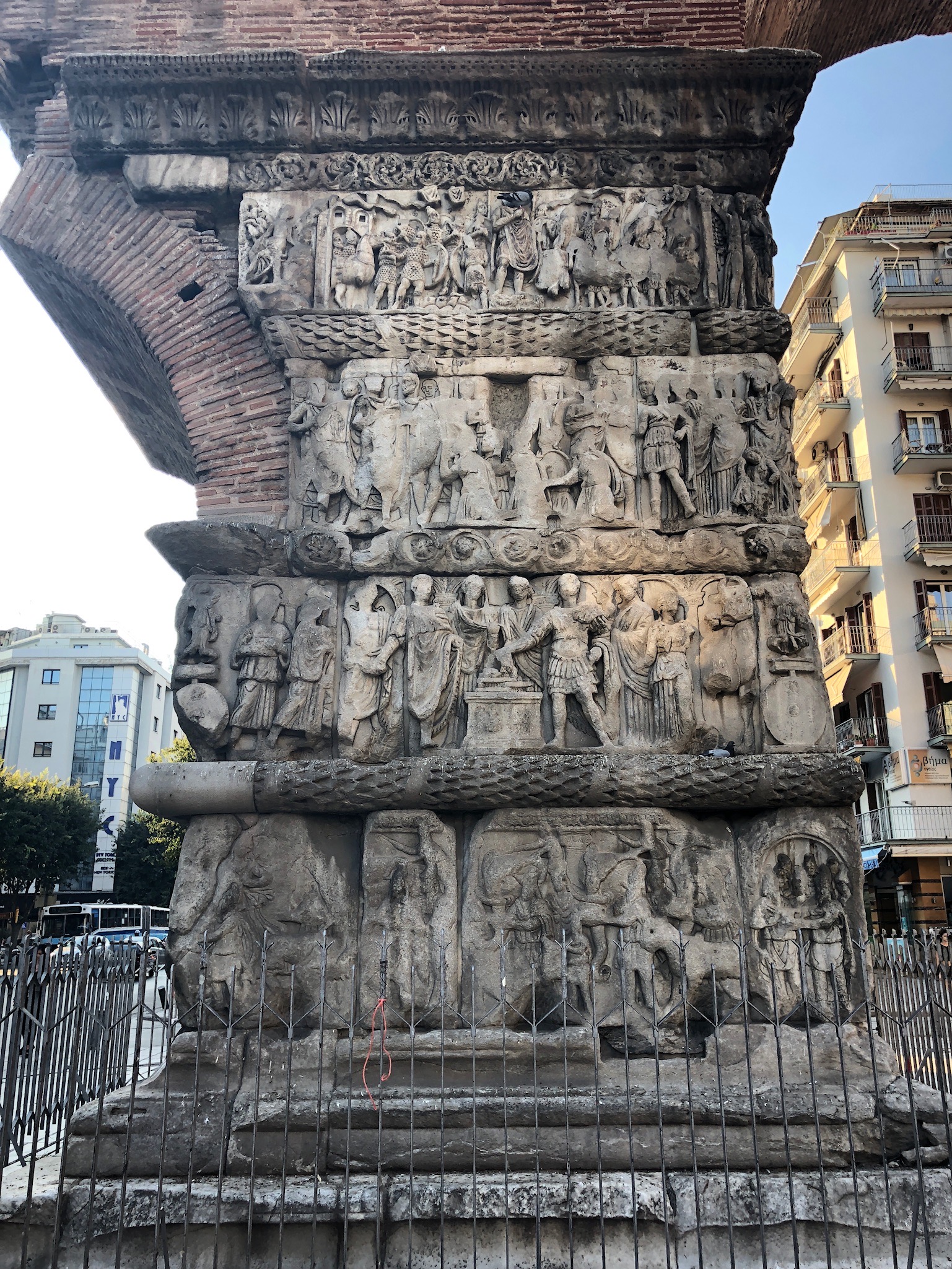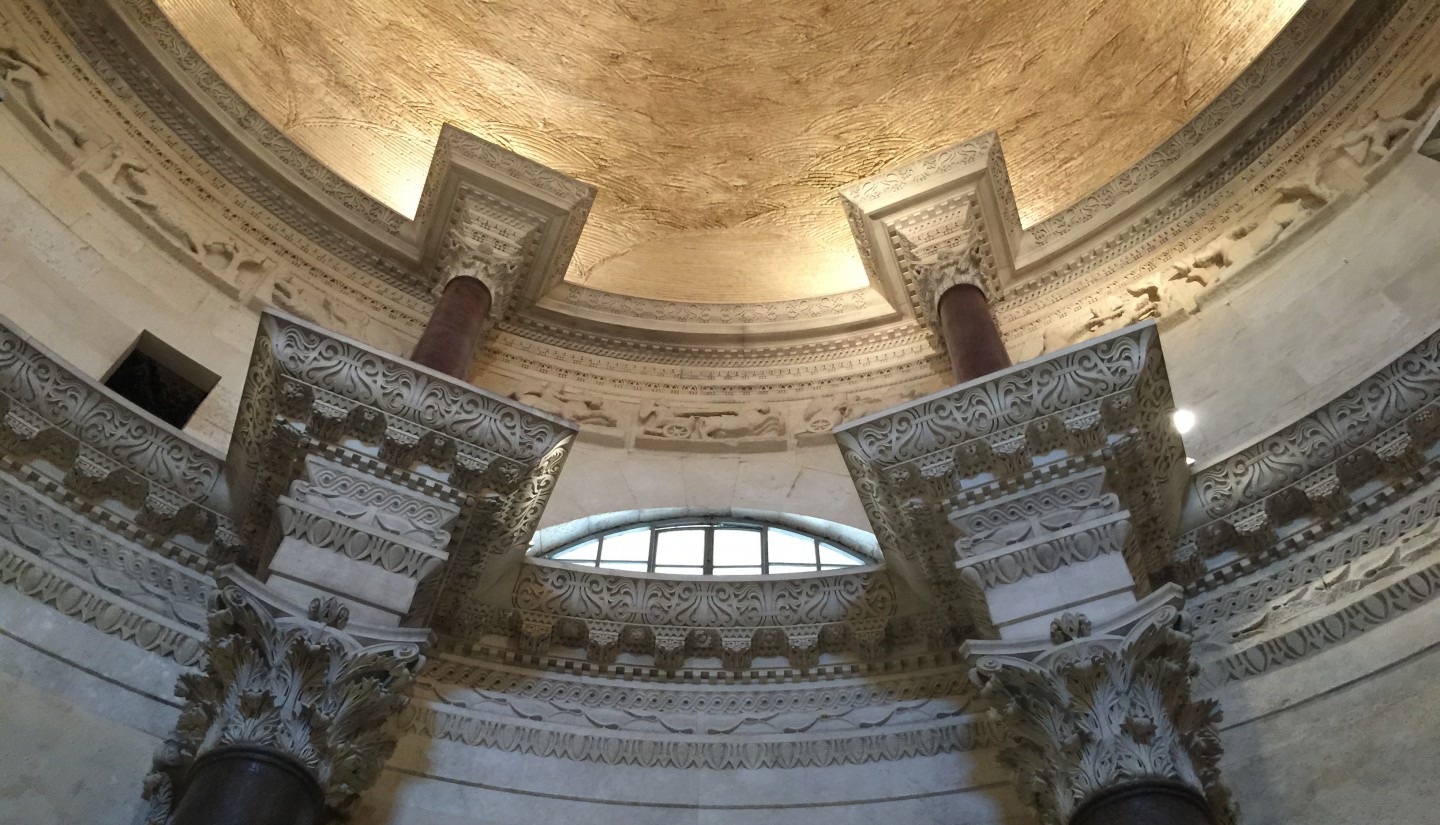Overall Impact: *** 3 stars – the Arch is much reduced and damaged by atmospheric pollution. We approached with anticipation but were disappointed by its poor condition – nevertheless, it is a major statement of Tetrarchic power and ideology.
Access **** 4 stars – the Arch sits on what was in Galerius’ time and still is the main street of the City. Accessible 24 hours a day but be alert for traffic and touts.
Atmosphere * 1 star – it feels like a traffic island!
Other * 1 star – there is only perfunctory explanation of what is a major late Roman monument, and its condition is deteriorating exposed to high levels of street pollution.

There are three linked remaining monuments of Galerius’ Imperial Precinct in Thessaloniki. The Arch sat across the Via Egnatia‘s exit from the City to the East towards Byzantium. The Imperial Palace lies 230m south of the Arch linked by a road, and the Rotunda Mausoleum lies 125m to the north linked by an arcaded road.
The Arch was an octopylon or eight pillared gateway, forming a triple arch (one central large arch, and two smaller side arches) with four pillars to the east and four to the west. All that is left are three of the western arches. The entire eastern four arches are gone as is the southernmost of the western arches. The two pillars flanking the central large arch retain their sculptures slabs.
The Arch celebrates Galerius’ victory over the Sassanids at the Battle of Satala and the capture of their capital, Ctesiphon, in 298AD.
Our ability to understand the meaning of the Arch is impacted by the loss of the majority of the marble panels. They show:
- Galerius, supported by a wreath bearing eagle, in personal mounted combat with the Sassanid Narses, with terrified Sassanids cowering under the hooves of the Caesar’s horse. This may be artistic licence, however, as it seems unlikely they ever personally met in combat.

- There is panel with a relief of the Imperial Family making a sacrifice in thanksgiving. This shows Valeria, who was former Emperor Diocletian’s daughter as well as being Galerius’ wife, giving him imperial legitimacy.

- In another survivor panel the four Tetrarchs (the Augusti Diocletian and Maximian, and the Caesares Galerius and Constantius) are all in togas, while the personification of Victory holds out wreaths to the two Augusti.

- The final surviving panel assert the Unity of the Tetrarchy through the depiction of the Tetrarchs standing together. Galerius is dressed in armour as he makes the offering on the altar.

The Arch is thus a celebration of Galerius’ victory but one achieved very much within the unity of the then-new Tetrarchic System.














